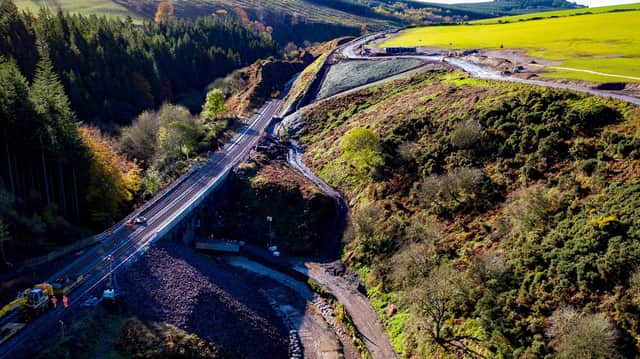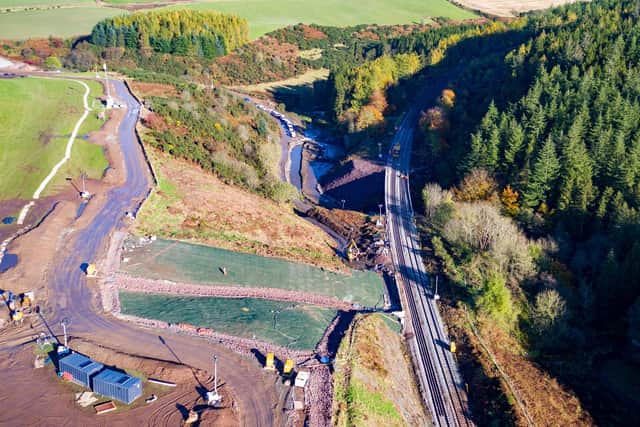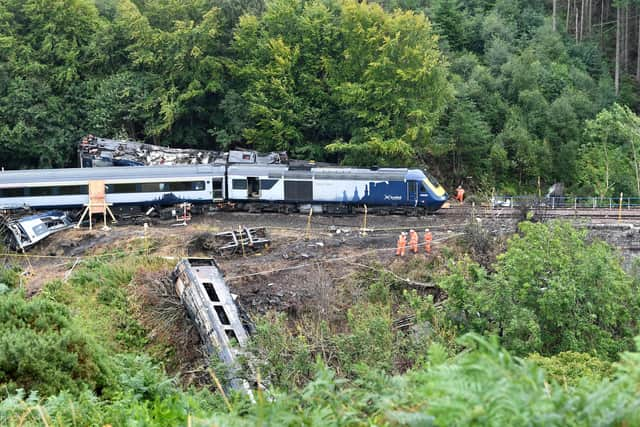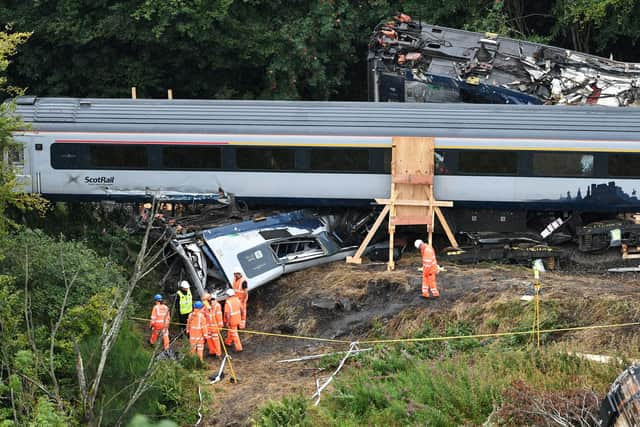Stonehaven rail line to re-open on Tuesday three months after fatal crash


A rail industry website shows replacement buses which have been running since the incident will be switched to trains on Tuesday.
The change was confirmed to The Scotsman by an industry source, with an announcement made this afternoon.
Advertisement
Hide AdAdvertisement
Hide AdThe re-opening is dependent on bad weather forecast for this weekend not causing further damage.


However, Network Rail engineers are believed to be confident of the site’s resilience following the completion of remedial work in key areas.
The route will be checked using a train without passengers running over that section on Monday.
Caledonian Sleeper said it intended to resume services to Aberdeen as soon as the line was re-opened.
A rail source told The Scotsman: “Caledonian Sleeper has ‘route refreshers’ using a locomotive booked for Wednesday/Thursday so its staff are again competent over the route.”


The moves come nearly three months after a ScotRail train derailed when it hit debris after heavy rain at Carmont, south of Stonehaven, on August 12.
Detailed investigation
The wrecked train was not moved for a month until detailed examination of the carriages by police and the UK Department for Transport’s rail accident investigation branch (RAIB) was complete.
Repairs to the site involved replacing more then 500m of damaged track, 70m of bridge parapet and relaying 400m of telecommunication cables.
Advertisement
Hide AdAdvertisement
Hide Ad

The rail embankment was rebuilt with drainage and flood defences improved above and below the line.
A 900m road and temporary bridges were built over farmland to provide access for a 600 tonne crane to lift the carriages.
An interim report by the RAIB said a drain carrying water from land above the line had washed rocks and gravel onto the tracks.
It said the train was travelling at nearly 73mph, close to the 75mph speed limit for that stretch of line, when it derailed.
Drivers operate under instruction from signallers over any changes to speeds.
Driver Brett McCullough, 45, conductor Donald Dinnie, 58, and passenger Christopher Stuchbury, 62, died when the 6:38am Aberdeen to Glasgow Queen Street train crashed.
Trains are currently only able to travel as far south as Stonehaven and as far north as Montrose.
Alex Hynes, managing director of Scotland’s Railway, which comprises Network Rail and ScotRail, said: “We continue to work closely with accident investigators as we seek to learn the lessons of this tragedy and make our railway as safe as possible for our people and our passengers.
Advertisement
Hide AdAdvertisement
Hide Ad"Our thoughts continue to be with the families and friends of Brett, Donald and Christopher and with the other passengers and colleagues who were affected by the accident.
"Our engineers have been working around-the-clock to repair and reopen the railway and we thank all our customers and lineside neighbours for the understanding they have shown during this difficult and distressing event."
A Network Rail review last month showed 584 sites across Britain which shared some of the same characteristics as at Carmont.
These included 80 locations in Scotland.
No significant issues “requiring emergency intervention” were found, although defects that have “deteriorated and require action sooner than originally planned” were identified at some six sites.
But Network Rail said it was “not economically viable to strengthen all sub-standard infrastructure slopes.”
A message from the Editor:
Thank you for reading this article.
We're more reliant on your support than ever as the shift in consumer habits brought about by coronavirus impacts our advertisers.
If you haven't already, please consider supporting our trusted, fact-checked journalism by taking out a digital subscription.
Comments
Want to join the conversation? Please or to comment on this article.